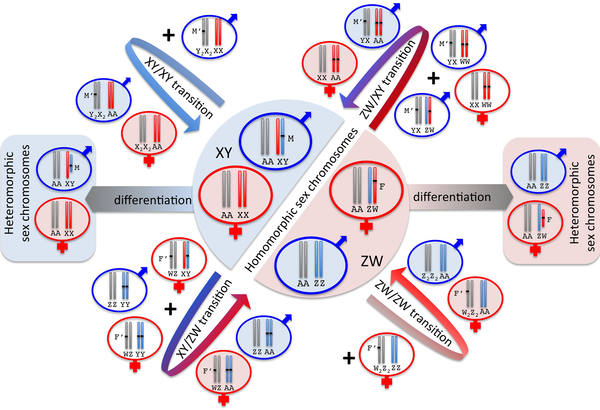Table of Contents
I. Introduction
A. Definition :
The chromosomal basis of sex refers to the genetic basis by which the sex of an individual is determined. It encompasses the chromosomes, genes and molecular mechanisms that are involved in the development of sexually dimorphic characteristics.
B. Importance :
Understanding the chromosomal basis of sex is important for a variety of reasons, including for medical purposes such as the diagnosis and treatment of chromosomal disorders, for genetic counseling, and for our general understanding of the mechanisms of sex determination and sexual differentiation.
II. Chromosomes
A. Definition of Chromosomes:
Chromosomes are the structures in cells that contain DNA and genes.
B. Types of Chromosomes:
There are two main types of chromosomes in humans: autosomes and sex chromosomes.
- Autosomes: Autosomes are chromosomes that do not participate in the determination of an individual’s sex. There are 22 pairs of autosomes in humans, making a total of 44 autosomes.
- Sex Chromosomes: Sex chromosomes are chromosomes that determine an individual’s sex. In humans, there are two sex chromosomes, the X and Y chromosomes.
III. Chromosomal Determinants of Sex Determination
A. Definition :
Chromosomal determinants of sex refer to the specific chromosomes and genes that are involved in the determination of an individual’s sex.
B. Male and Female Chromosome Combination:
The combination of sex chromosomes in an individual determines their sex.
1. Male Chromosome Combination: Males have one X and one Y chromosome. The presence of a Y chromosome leads to the development of male characteristics, such as the formation of testes and the secretion of testosterone.
2. Female Chromosome Combination: Females have two X chromosomes. The absence of a Y chromosome leads to the development of female characteristics, such as the formation of ovaries and the secretion of estrogen.
C. Sex-Determining Genes:
There are specific genes on the Y chromosome and X chromosome that are responsible for the development of male and female characteristics.
1. SRY Gene: The SRY gene is located on the Y chromosome and is responsible for the development of testes and the secretion of testosterone. The activation of the SRY gene leads to the differentiation of the gonads into testes, which then secrete testosterone, leading to the development of male secondary sexual characteristics such as a deep voice and facial hair.
2. DAX1 Gene: The DAX1 gene is located on the X chromosome and is involved in the regulation of testis development. Mutations in the DAX1 gene have been associated with abnormalities in gonadal development, which can result in atypical sexual differentiation.
In conclusion, the chromosomal determinants of sex play a critical role in the determination of an individual’s sex, as well as in the development of male and female secondary sexual characteristics. Understanding the mechanisms by which these determinants influence sexual differentiation is essential for the diagnosis and treatment of genetic disorders, as well as for our general understanding of human biology and evolution.
